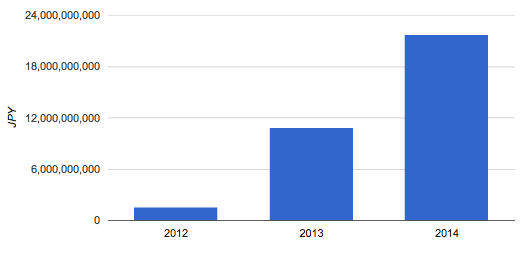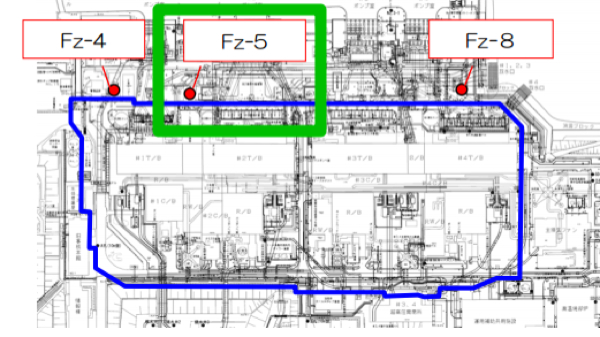Energy News.....
Simply Info......



Japanese Nuclear Expert: Melted reactor cores not in one piece at Fukushima, as gov’t claims — I think nuclear fuel scattered everywhere, stuck to walls — Chernobyl-like sarcophagus may be needed — Nothing has been done, by time they deal with this I’ll be long dead
Fukushima Diary......
Japan budgets 22 billion yen to increase food export / 14 times much as 2012
Posted by Mochizuki on June 14th, 2014 · 9 Comments
↑ Japanese government’s budget on food export is rapidly increasing since 2012.
Japanese government budgets 22 billion yen to increase Japanese food export for fiscal 2014, according to the Ministry of Agriculture, Forestry and Fisheries.
Japanese government aims to double the food export by 2020. They are investing to promote food from and made in Japan collaborating with “Cool Japan”.
The budget includes the exhibition cost of 1.1 billion yen for EXPO Milan.
From the research of Fukushima Diary, this budget to increase Japanese food export has been skyrocketing since 2012 (The graph above).
In order to “restore” the credibility and “brand” of Japanese food damaged by Fukushima accident, the government of Japan budgeted 1.5 billion yen in 2012. It jumped up to 11 billion yen in 2013.
By 2014, it’s already increased by 14 times since 2012.
Related article.. Singapore to lift all the restrictions on imports from Fukushima [URL]
2,000 Bq/Kg from marine soil 6km offshore Fukushima, over 1,000Bq/Kg at 20 locations / The further, the higher
Posted by Mochizuki on June 14th, 2014 · 1 Comment
High level of Cesium-137 is concentrated in offshore “hot spots”, NRA (Nuclear Regulation Authority) reported on 6/13/2014.
They measured 2,000 Bq/Kg of Cs-137 (excluding Cs-134) 6km offshore Fukushima plant. This is 20 times much as food safety limit in Japan.
Additionally they measured over 1,000 Bq/Kg at approx. 20 locations 4km offshore area.
The report reads, the further you go from Fukushima nuclear plant, the higher the radiation level goes. However, because they didn’t survey further than approx. 32km offshore, it is not clear how far the contamination spreads.
The survey was implemented from 12. 2013 to 3. 2014. The samples are the surface marine soil (3cm depth) taken by towing.
Tritium density in deep underground broke the highest record ever, 4,700,000 Bq/m3
Posted by Mochizuki on June 14th, 2014 · 10 Comments
Following up this article..
From Tepco’s follow-up report on 6/13/2014, the Tritium density increased again and it reached 4,700,000 Bq/m3 in the same from the same sampling well (Location is on the map above).
Tepco hasn’t made any explanation on this increase in Tritium density. From Fukushima Diary’s research, this is the highest reading since Tepco started measuring groundwater 25m underground. There is a possibility that the frozen water wall is spreading contamination underground.
Simply Info......
New Strontium 90 Removal System To Be Installed At Fukushima Daiichi

Kurion will provide a truck back filter system to remove strontium 90 from contaminated water currently held in storage tanks at Fukushima Daiichi. Kurion, Toshiba and TEPCO have all been mum about the exact role the new filter system plays vs. the ALPS system that has been the main hope for decontaminating water. ALPS is also intended to remove strontium but … Read entire article »
Japan’s Nuclear Regulator Ignores Scientists Warnings Again

It truly is a Hollywood cliche, ignore the scientists until it is too late. This is the newest issue related to nuclear plant restarts in Japan, volcanos. The Sendai nuclear plant sits near a fairly large active volcano as we explained here in the report The Real Risks At Sendai. Reuters reports there are even more diverse volcano risks at Sendai … Read entire article »
WIPP’s Refusal On Public Accountability

Since the incidents at WIPP in February the city of Carlsbad has been holding periodic town hall meetings to update the public on the situation at WIPP. These meetings have been broadcast online and the public has been allowed to ask questions via online submission. That sadly hasn’t obligated DOE or the contractor running WIPP to actually answer them or … Read entire article »


No comments:
Post a Comment